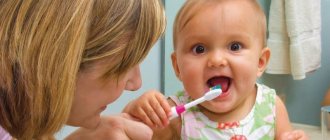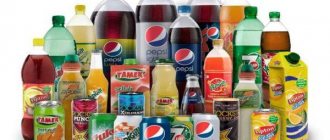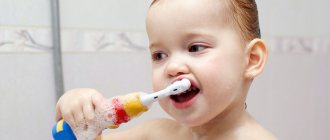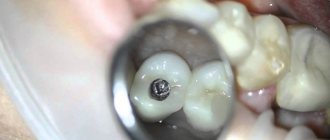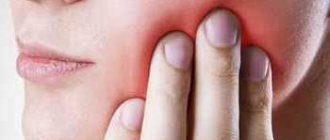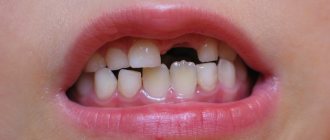All parents watch with trepidation how their newborn baby develops. Some changes bring joy, while others cause anxiety. So, many people don’t know what to do when their baby starts teething. To distinguish this natural process from a cold and not harm the baby, you need to listen to the opinion of the authoritative doctor Komarovsky.
- 2 When is there no reason to worry?
- 3 Warning symptoms
- 4 Colds or first teething
- 5 What should parents remember?
- 6 Komarovsky on teething
Features of teething
Young parents often come across stories on the Internet about how their children cut teeth. A couple of such stories are enough to begin to mentally prepare for sleepless nights , constant whims and crying. Of course, there is some truth in this, but in most cases, eruption is not as difficult as Dr. Komarovsky says.
The timing of teething depends on various individual characteristics. So, one child’s first teeth appear at 3 months, while another’s teeth appear closer to a year. In some cases, a young mother notices the first tooth only during feeding.
What should parents know before dental treatment for children under medicated sleep conditions?
Parents need to know a lot about it, even if they are not dentists and do not want to “get into” the terminology and treatment methods. When it comes to issues of a child’s health, no matter who the parents are, they will have to go through a certain kind of “educational education” so that the decision about treatment is made consciously. Therefore, usually a consultation on treatment under medicated sleep lasts at least 45 minutes, and sometimes more. And here's what's being discussed:
- What is medicated sleep?
Dental treatment for a child under medicinal sleep conditions is one of the methods used in children of any age (when they already have teeth) according to indications. During treatment, the child is in a state of deep sleep, consciousness is turned off, there is no understanding of what is happening and no memories of it. The term “medicated sleep” is similar to the term “deep sedation.”
- Medicines, why is it safe?
At the moment, the drugs of choice for this condition are Sevoflurane (Sevoran) and Diprivan (Propofol, Pofol). Sevoran is a gas supplied using a high-precision device through a mask or tube into the lungs. Propofol is a white liquid that is administered intravenously using a special syringe.
Most often, a combination of these drugs is used, but the decision on the choice of drug or their combination remains under the jurisdiction of the anesthesiologist-resuscitator. These drugs are the most “clean” in modern reality and do not have the side effects that were characteristic of similar drugs of the last century. After treatment with Sevoran and Diprivan, there is no nausea and vomiting, no dizziness and disorientation in space, no neurological “kickbacks”. Therefore, treatment with medicated sleep is used in children with diagnoses such as cerebral palsy, mental retardation, autism, Down syndrome and others. Such children are most often in constant cycles of rehabilitation and, after undergoing treatment with Sevoran and Diprivan, do not lose the achieved results.
- Indications and contraindications
In dentistry, indications for treating children in medicated sleep are:
– multiple dental caries under the age of 3 years
— malformations of the central nervous system (Down syndrome, mental retardation, cerebral palsy, etc.)
- a large volume of intervention that must be carried out at one time for the child’s psychological comfort
- insurmountable fear of dental treatment (dentophobia), inability to adapt
- purulent-inflammatory diseases, abscesses, if it is impossible to carry out sufficient local anesthesia
- allergy to local anesthetics
Contraindications:
- decompensation of the underlying general disease
- acute and exacerbation of chronic diseases of the upper respiratory tract
Treatment in medicated sleep (hereinafter referred to as MS) may be denied if the preparation regime is violated, in the form of eating after a set time.
So, the parents realized that their child had indications for such treatment, and learned the basics - what MS is and how it is carried out. Next, I think it’s logical to talk about how all this happens, describing everything in detail. So that while listening or reading, you can imagine and “primarily experience” the whole process.
- Logistics from registration to departure home and beyond
After understanding the need for dental treatment for a child with MS, parents usually have a question of choice - “where to treat”, “how does this happen”? This is also accompanied by a hundred more questions like “how will he fall asleep?”, “how will he wake up?”, “will he be in pain?” and so on. Therefore, we provide the following information, which provides answers to most questions.
When the day of treatment arrives and the baby and his parents arrive at the clinic, everything begins like this.
The administrator copies the tests brought and takes a certificate from the pediatrician. Doctors come, greet and sign consent for their interventions: an anesthesiologist-resuscitator and a pediatric dentist. The previously drawn up treatment plan is discussed again. At this moment, parents can still express their wishes, for example, ask to still do the sealing, which was initially refused, or, conversely, write a refusal to treat a specific tooth. After a short time (~15 minutes), mother (or father) and child are invited to an office, on the walls of which there are pictures of animals sleeping peacefully on clouds.
There are 4 people in the office who will carry out the treatment. These are anesthesiologist-resuscitator, nurse anesthetist, pediatric dentist and dental assistant. When the baby falls asleep, there is also a full-time psychologist in the office. The baby is asked to lie down on an unfolded dental chair covered with a blanket and a disposable sheet, and the mother sits next to her on a chair, hugging the child. The anesthesiologist talks to the mother and baby, explaining what will happen now. A mask containing sevoran is applied to the child’s face. At this moment, the mother hugs, strokes the baby, tells him what exactly to do or simply encourages him. After 10-15 seconds of deep breaths of sevoran, initial sleep occurs, the baby closes his eyes and at this moment does not know where he is. After this, the coordinated work of the medical staff begins, mom or dad is escorted by a psychologist to the prepared waiting room, and the doctors begin their work.
The dentist takes all necessary diagnostic images and an initial photo protocol. He adjusts the preliminary treatment plan, depending on the expected diagnoses for specific teeth, and goes to the parents, telling them what will change in the plan and why.
This baby's sleep time is not wasted. While the doctor is talking, an experienced assistant is already carrying out professional hygiene of all teeth, without which high-quality treatment is impossible. When the doctor returns to the office, he immediately begins to work with the child’s already clean teeth.
During treatment, parents may experience anxiety about the child’s condition, however, by contacting the administrators, they can receive feedback in the form: “everything is fine, treatment is underway” or “the right side has been cured,” “crowns are being tried on,” etc.
After treatment, having completed his work, the doctor takes control photographs and a photo protocol is sent to the parents with a report on the treatment performed. In the 5-10 minutes that they have to discuss the results, the anesthesiologists finish their part of the work and bring the still sleeping baby to the waking room to the parents. Next, the dentist and anesthesiologist come to the parents in turn with recommendations and a description of further actions. Each of them tells how to behave at home, what the child feels in his mouth, what support he needs, what cannot be done, and what is absolutely necessary. Within half an hour, the baby wakes up, is given ice cream (if possible and age allows) and for another 15-20 minutes he finally comes to his senses, after which he can go home.
It is important to note that the work is carried out in a coordinated manner, and care for the child is deeply embedded in the standards of treatment created by the chief physician of the clinic. The child will wake up pained, and you will be told how to maintain this condition! You shouldn’t have the fear that “he’s in pain”!
Then you can’t forget about dentists for a couple of years. After treatment, we meet with the child on average 3 months later (the date is set by the doctor) for the purpose of examining and... correctly, ADAPTING him to the dental office. Now our goal is to carefully, systematically, raising the bar each time, to create conditions in which a person will grow up without dental phobia and will perceive preventive and therapeutic visits to the dentist as one of the aspects of self-care.
- Openness and reporting
All stages of the work are photographed, and after treatment, parents receive a photo report in one form or another. Usually we make collages on which we mark the key points of treatment - how many teeth were cured, where there was pulpitis, where there was pus, where there were difficulties in saving the tooth due to severe decay, or another 10 minutes wasted due to inflammation and bleeding of the gums. Thus, it becomes clear to parents what is now in the child’s mouth, what should not be allowed, and what results we expect from this or that tooth.
So, the virtual treatment took place, the thought in my head was “everything suits me, what should I do now to make the treatment take place”?
- Analyzes and preparation
It is necessary to select a date and time of treatment with the administrator and collect tests by this date. Here is their list:
— clinical blood test (acceptable from a finger, in case of difficulties with blood sampling)
- general urine analysis
— ECG or echocardiogram (ultrasound of the heart) for children, or if the child is restless
- certificate from a pediatrician
Additionally, you need a certificate from a specialist who registers the child if there is an underlying disease. For example, a neurologist for cerebral palsy or a cardiologist for heart disease.
It is logical to take tests first, and get a certificate from the pediatrician last, so that he has the opportunity to assess the child’s condition based on tests, among other things.
Important! On the day of treatment, it is necessary to observe a fasting break and not allow the child to eat or drink for 2 to 4 hours. This is described in detail in our instructions that you receive after the consultation.
- What to do if the tests are ready and the child is sick?
This happens, and the key to success in order to get out of this situation calmly is communication. Yes, don't be surprised. If a child, a couple of days before treatment or right in the morning on the day of treatment, suddenly starts sneezing, or has a fever, or has a runny nose... you can’t wait and think. The first thing that should happen is a call to the anesthesiologist
! You found out who your doctor is at the time you select the date and time, and the phone number is printed on the memo. The anesthesiologist will guide you, assess how much the condition is interfering with treatment, make recommendations, and you will know what to do next. How and when treatment will take place in this case. Without unnecessary assumptions, you will receive guidance for action.
What else do parents need to know?
Dear parents, I am deeply convinced that most disputes, conflicts and misunderstandings are born from closedness, stereotypes and lack of communication. I repeat to everyone during consultations many times - we are here for you, we are in touch. Please, if you have any questions, ask us. You have entrusted or are still choosing whether to entrust us with the treatment of your child, and there should be no room for doubts and “look on the Internet”, all questions can be discussed openly.
- Trust and feedback
You can always contact your dentist or anesthesiologist directly, and we will answer you. You receive a photo report of the work done with the stages of treatment and comments. You receive recommendations and guidelines for action. You receive our willingness to follow the path of adaptation with the child, find a common language with him and move on.
At the end of the article, I would like to note that, as a rule, it is still very important for parents to know what materials, devices and methods will be used for treatment. This is the topic of a whole separate article, but this information is also discussed during the pre-treatment consultation.
The key to successful dental treatment for a child during medicated sleep, in my opinion, is open communication and parents’ trust in the team of doctors. The doctors at the Belaya Medveditsa clinic work for the health of your children and are open to discuss all issues.
When is there no reason to worry?
During the appearance of the first teeth, the baby’s behavior, as well as the reaction of the small organism, may change. The main symptoms are:
- Increased salivation . It is observed in almost all children. Saliva production increases from 10 weeks and lasts up to 4 months. At this time, it is enough for the young mother to prepare a set of bibs and change them regularly.
- Skin irritation on the chin and around the mouth. The cause of this phenomenon is the aforementioned excessive salivation. To avoid irritation, you need to wipe your baby's face with gentle movements and regularly apply a little emollient cream to the skin. It is best to use it before bed, so that the product is completely absorbed.
- While feeding a baby who has started teething, the mother experiences discomfort as the baby tries to bite the nipple . This is explained by the fact that the baby wants to scratch his gums, which is why he squeezes any objects.
When should you start brushing your teeth?
From the moment the first tooth appears, which can erupt between the ages of five and eight months. Most often, the central incisors on the lower jaw appear first.
This is preceded by a period when the gums swell and bother the child. To alleviate the condition, you can give your baby a teething brush - it looks just like a regular one, but has thick and soft rubber bristles that massage the gums without injuring them. The baby will hold it himself, move it along the gums, bite the bristles to relieve itching, so he will quickly get used to the brush and the teeth cleaning procedure.
The teether has soft and thick bristles
When a child's first incisors appear, it is important to clean them with a children's toothbrush with rubber bristles. This procedure cannot be neglected, since at this age the baby eats liquid food, and only solid food (for example, raw carrots or apples) contributes to the process of self-cleaning of the oral cavity. Therefore, it is important to help the child get rid of plaque.
To begin with, let the baby touch the brush, examine it, and try to move it over the teeth himself. This will help him get used to the new subject. After this, you can begin the cleaning itself. It is important to brush your teeth correctly: move the brush from the gum to the edge of the tooth and do not forget about the inner surface.
Let your child try brushing his teeth so that he gets used to the procedure/figcaption>
In addition, the appearance of the first teeth is a reason to take the baby to the dentist. First, the doctor will evaluate the quality of the enamel and help prevent possible problems that may appear at an early age. Secondly, over time, such examinations will become something ordinary for the child and will not cause fear.
Alarming symptoms
In some cases, teething causes great discomfort for the baby. This is explained by the fact that everyone has a different pain threshold. Accordingly, breaking through the soft tissue can be really painful.
This is especially true for the eruption of incisors and the very first teeth. During this period, some babies refuse food, even if they are hungry. Komarovsky explains this by the fact that painful sensations during sucking intensify significantly. If the baby missed no more than 2-3 feedings, there is nothing to worry about. If the baby refuses to breastfeed for 2 days or more, you should consult a pediatrician. Most parents are sure that diarrhea always accompanies teething . Some doctors agree. So, a large amount of saliva that a child swallows can lead to disorder. However, other experts do not share this point of view, so it is best to consult a doctor if your baby has loose stools.
Physiological diarrhea in a child
Diarrhea in a child may occur due to changes in climatic conditions.
Doctors have a definition of “physiological diarrhea,” which is quite common in young children for various reasons, such as:
- teething;
- changes in climatic conditions;
- the body's response to the introduction of a new food product.
With “physiological diarrhea,” the child behaves as usual: sleeps peacefully, is active, and does not cry for no apparent reason.
This situation is the norm; usually diarrhea goes away quickly without medical help; you can, perhaps, make adjustments to the diet of the mother and child (if he is already eating complementary foods).
But if symptoms such as vomiting and fever appear, then immediately consult a doctor to prevent complications.
What should parents remember?
- When teething, the baby's sleep is disrupted. If your baby begins to cry at night and fidget restlessly in the crib, you need to let her calm down on her own. There is no need to rock your baby to sleep or feed him milk right away.
- In some cases, , that is, small bumps, forms on the gums They dissolve on their own. If anxiety is severe, you can use a cold compress.
- Severe pain often spreads to the child’s ears and chin. Most often this happens when the incisors begin to appear. However, children may rub their chin and face when they have an ear infection. Therefore, it is necessary to consult a doctor.
- When teething, a cough may occur , because the child does not always have time to swallow saliva. If there are no other symptoms, then there is no need to worry. This also applies to a runny nose caused by saliva entering the nasopharynx. If you have other alarming symptoms, you should consult your pediatrician.
How to choose baby toothpaste?
It is important to focus on the level of its abrasiveness. This indicator tells how much the composition erases tooth enamel when brushing, and is denoted by the abbreviation RDA. For children, a maximum of 20 RDA is acceptable, while for adults a level of 70 to 100 is safe.
In addition, baby toothpaste should not contain calcium carbonate and sodium bicarbonate, as these are harsh abrasives that can damage enamel. Instead, it is better to choose formulations with titanium or silicon dioxide.
Sodium lauryl sulfate, or SLS, is also toxic for children; it can dry out the mucous membranes and cause allergies. However, it is safe for adults. It is added to the paste to give it foaming properties. Accordingly, if the toothpaste produces abundant foam, this component is present in it.
To make it easier for your child to get used to the procedure, brush your teeth with him
The same reactions - dry mucous membranes and allergies - can be caused by parabens, which are used to preserve the composition and give it antiseptic properties.
Regarding fluoride content, the European Academy of Pediatric Dentistry (EAPD) recommends toothpastes with this component for everyone, including children after the eruption of their first tooth. Fluoride is necessary for the prevention of caries. In paste for children under four years old it should contain 200 ppm, children from four to eight years old need 500 ppm, and after eight years old - 1450 ppm.
In addition, fluoride has an alternative - synthetic hydroxyapatite, which is identical to natural hydroxyapatite, which makes up tooth enamel. This substance is easily integrated into the crystal lattice and strengthens it, sealing all microcracks, reduces sensitivity and prevents the development of caries. The only disadvantage of pastes with hydroxyapatite is that they are more expensive than fluoride ones.
The sooner you start paying attention to your child’s oral cavity, the faster and easier he will learn to take care of his teeth. If the baby was not taught to brush his teeth while he was very young, everything can be corrected. The main thing is to be patient and act consistently, then over time the procedure will become a familiar ritual for him
Reasons why a baby may have missing teeth:
- delayed physical development (rickets);
- absence of organ rudiments (edentia);
- lack of phosphorus, calcium, vitamin C, D and retinol;
- decreased thyroid activity (hypothyroidism).
Some children are born with a number of “white islands”. Doctors advise removing them so that the mother can freely feed the baby with breast milk. The first molar can come out at 4 months, but this may be a sign of a malfunction of the endocrine system.
How long does it take to transform a smile?
How long it takes for the first tooth to be cut primarily depends on the characteristics of the baby’s body. First, the gums swell - the first stage. From this moment it may take up to 2 months until the first child appears.
The process of cutting through the painter itself can take from 3 to 7 days. At this time, the crumbs constantly drag everything into their mouths, pressing on the problem area, they relieve the pain. A gentle massage of the gums will help eliminate unpleasant discomfort.
You can use a massager, which can be easily purchased in a network of pharmacies and stores. Gels with benzocaine and lidocaine also help reduce the intensity of discomfort. But first you need to make sure that your baby is not allergic to the active components of painkillers.
Before using the gel, it is recommended to place it in the cold, thanks to which blood circulation is delayed and pain is reduced.
